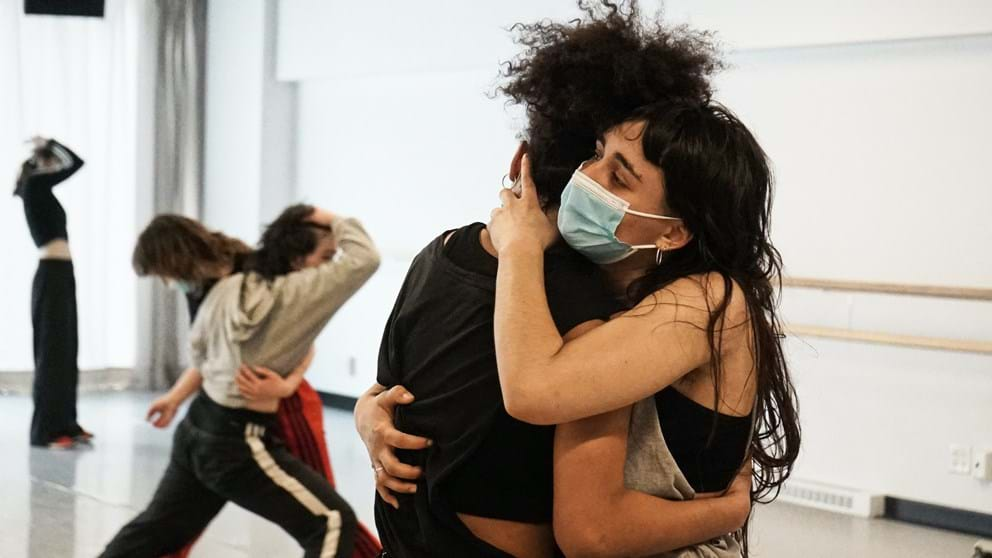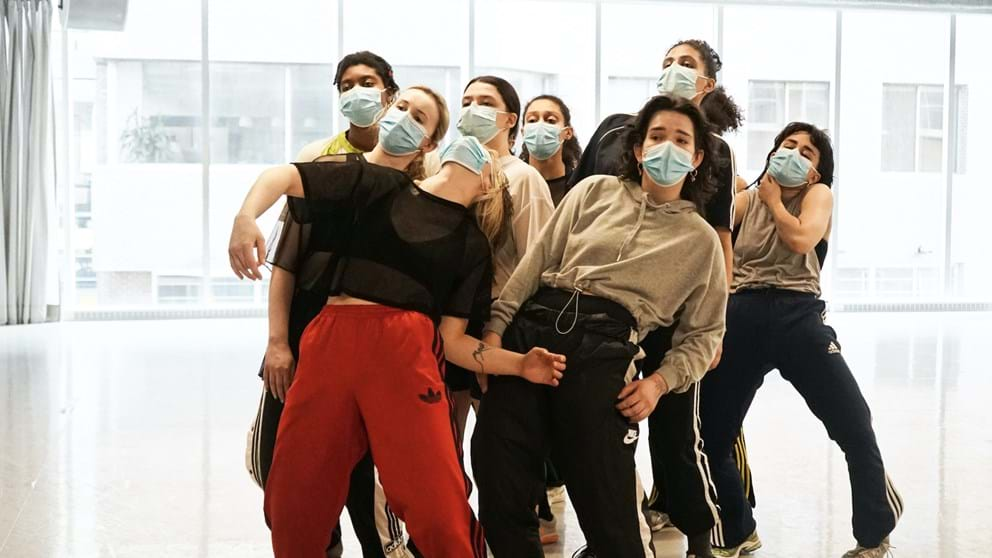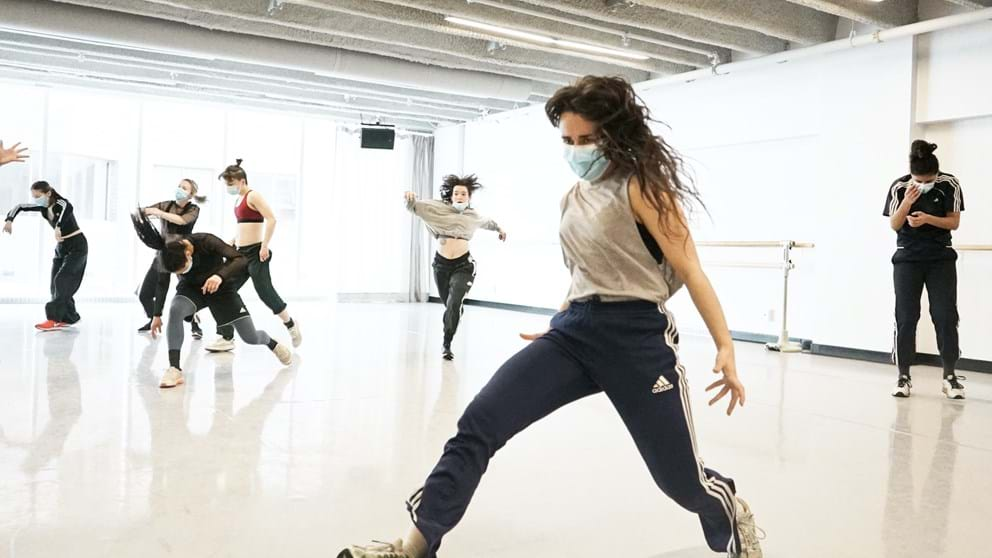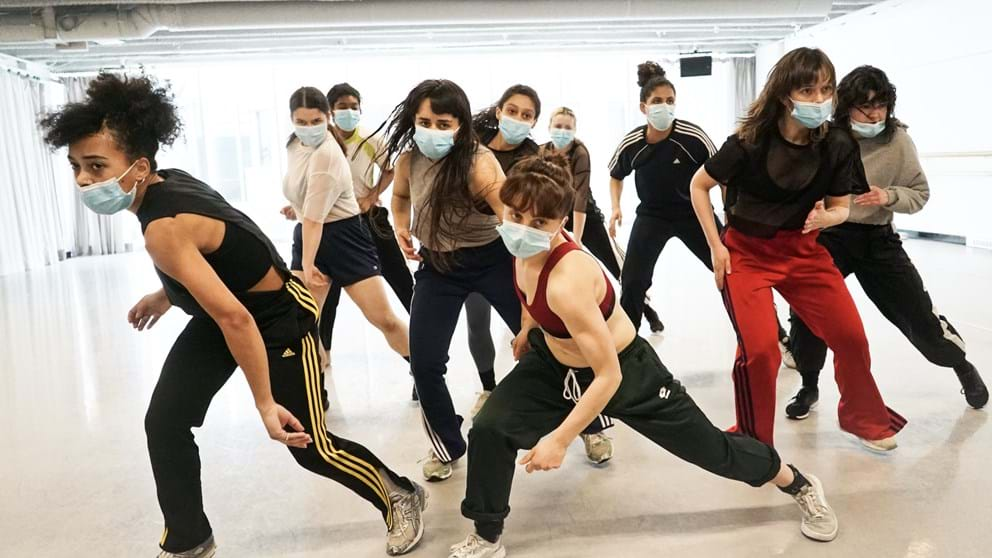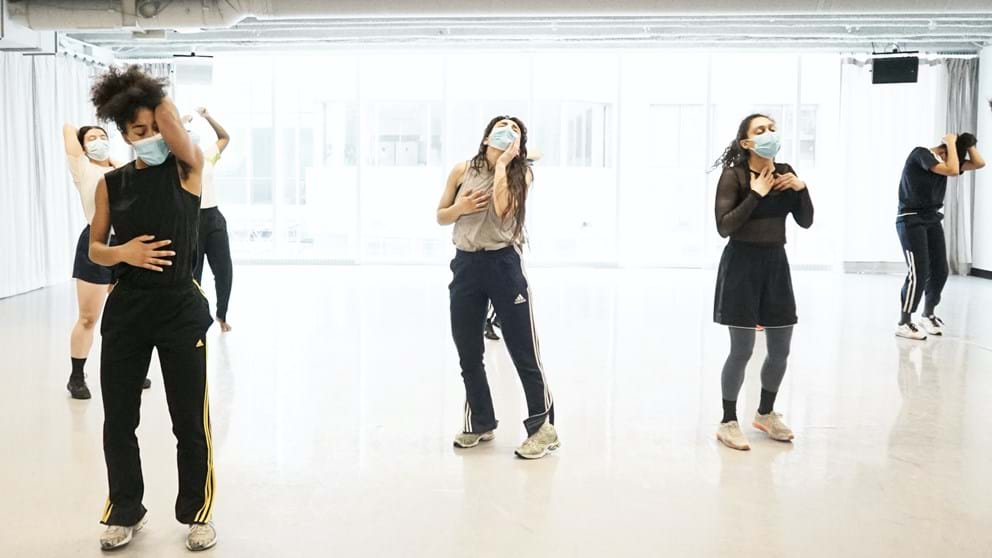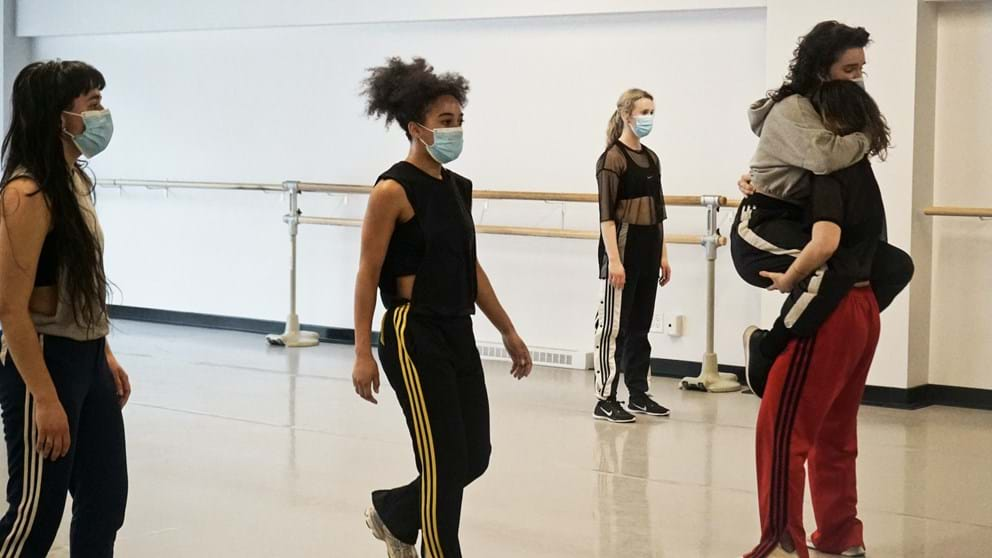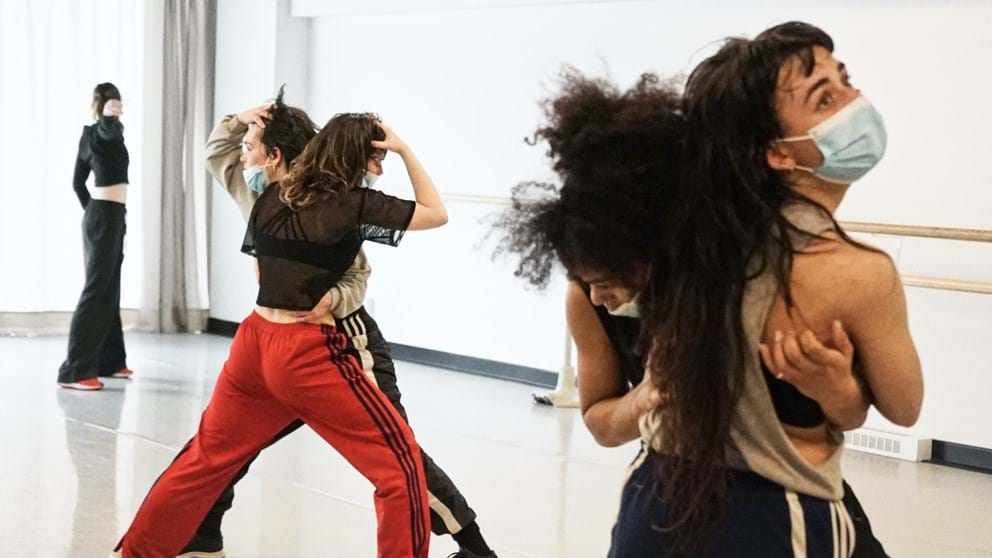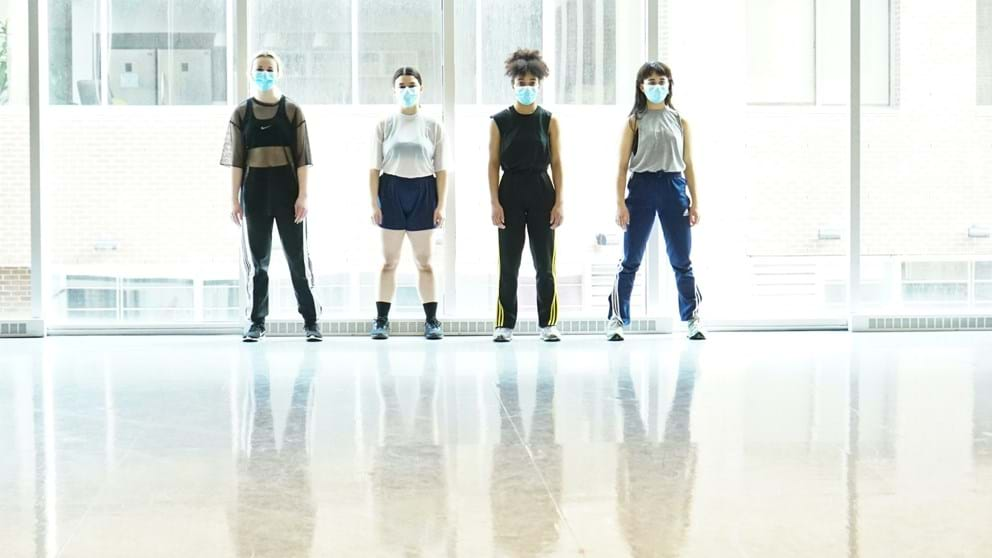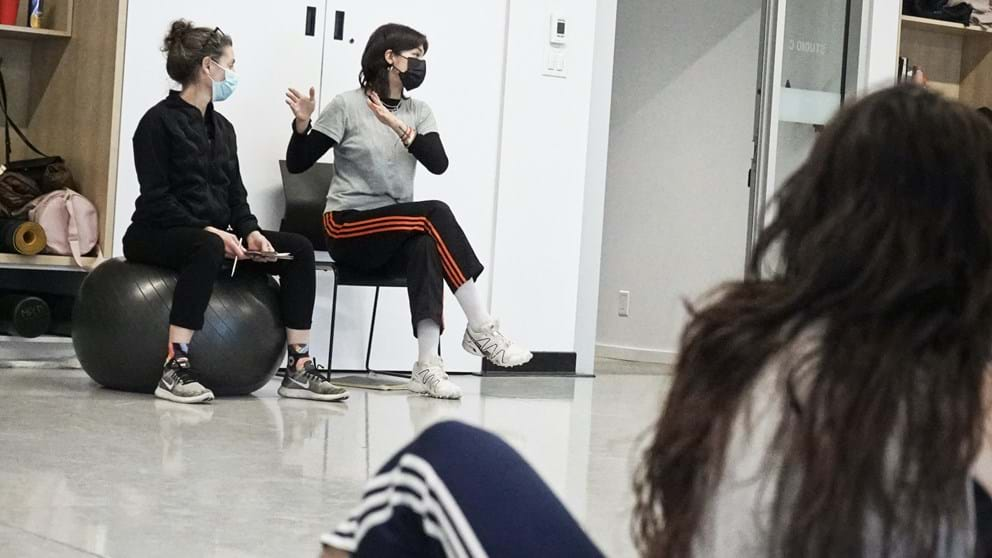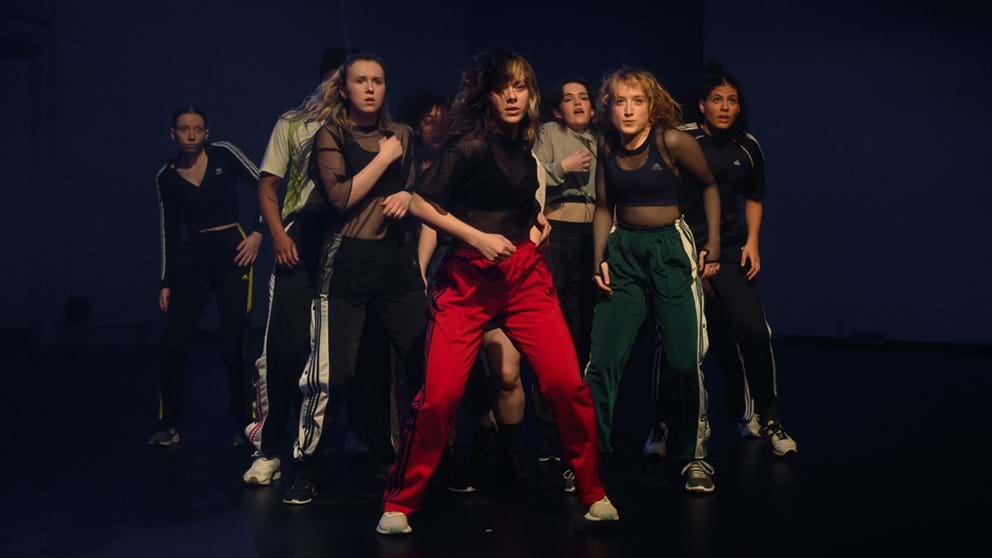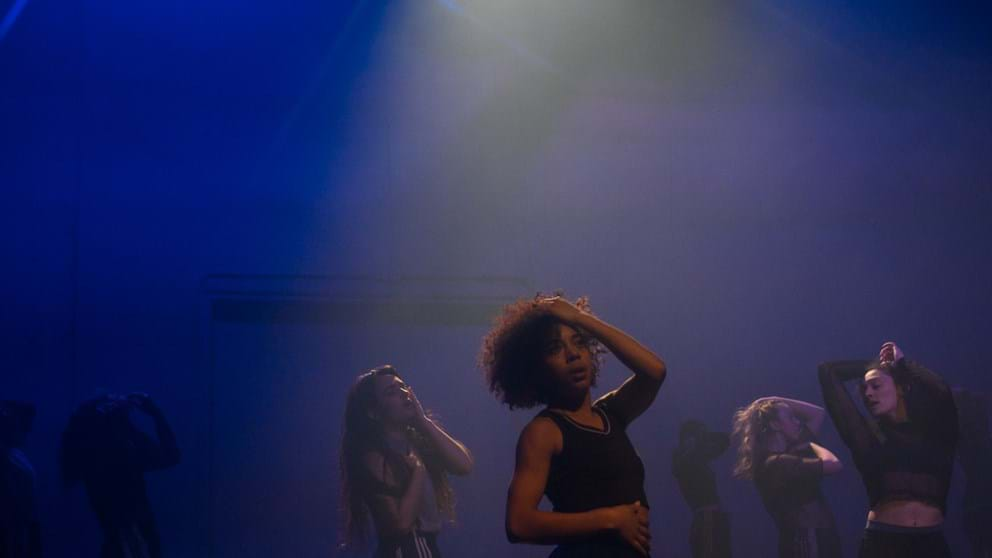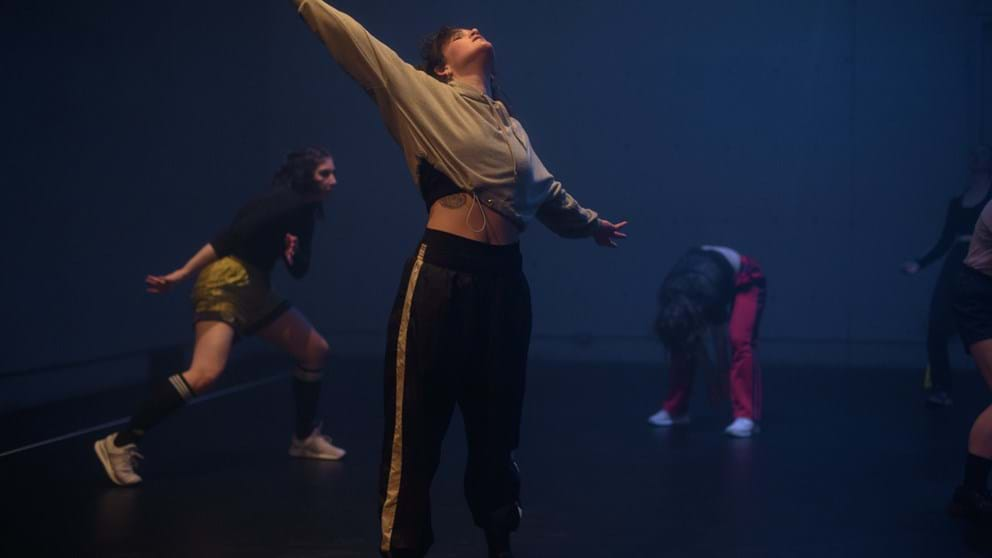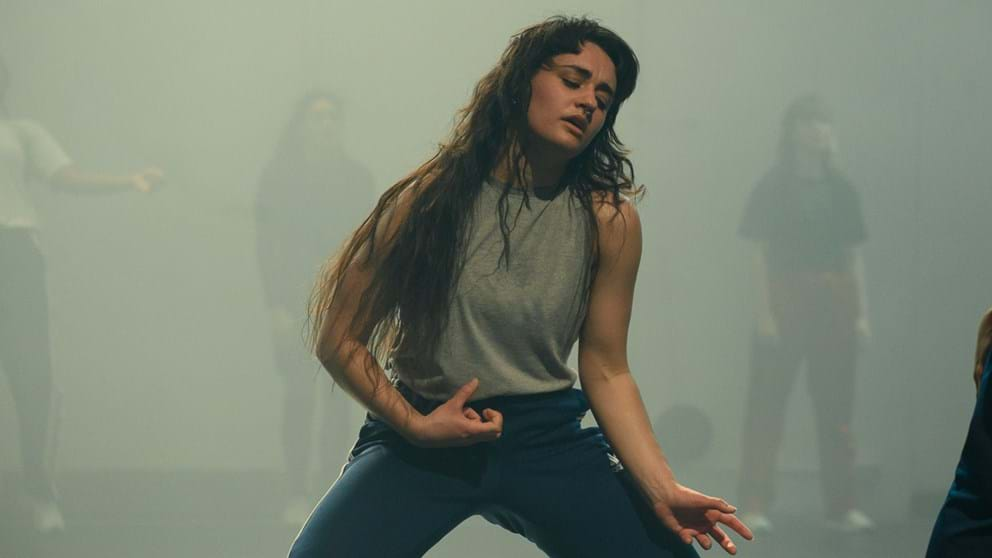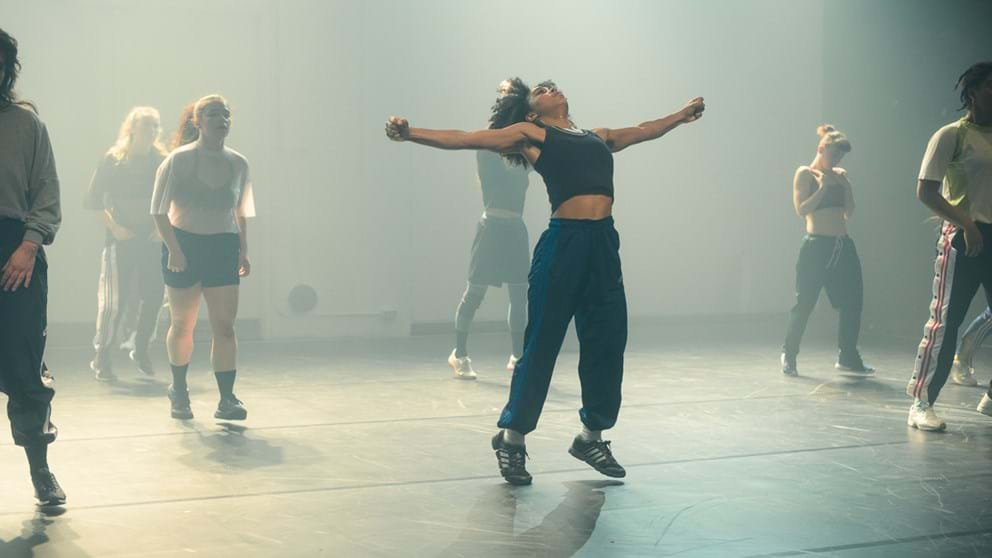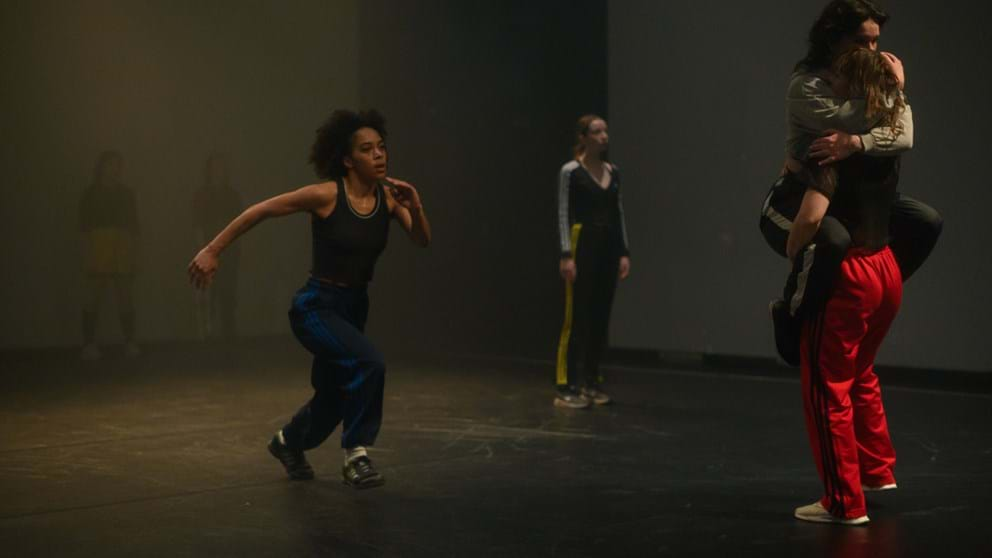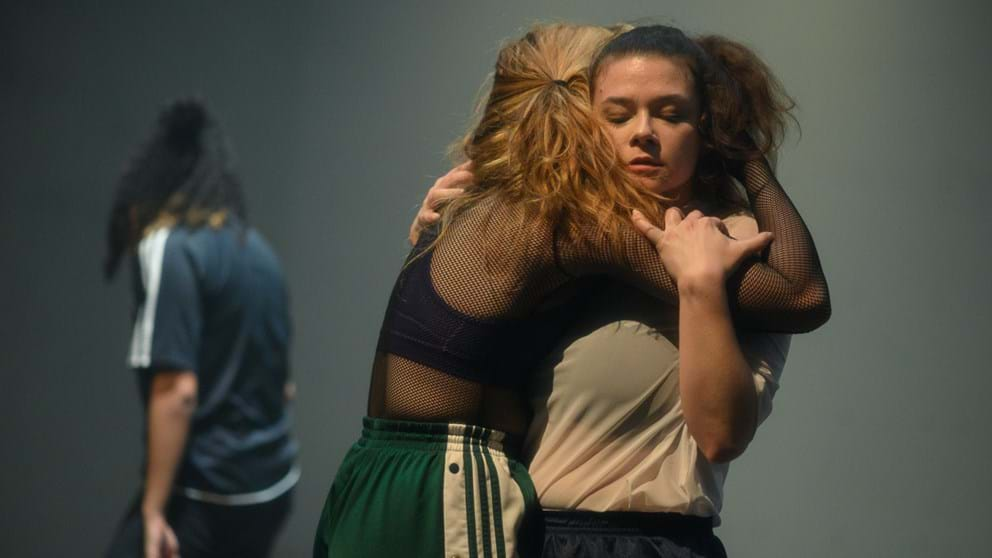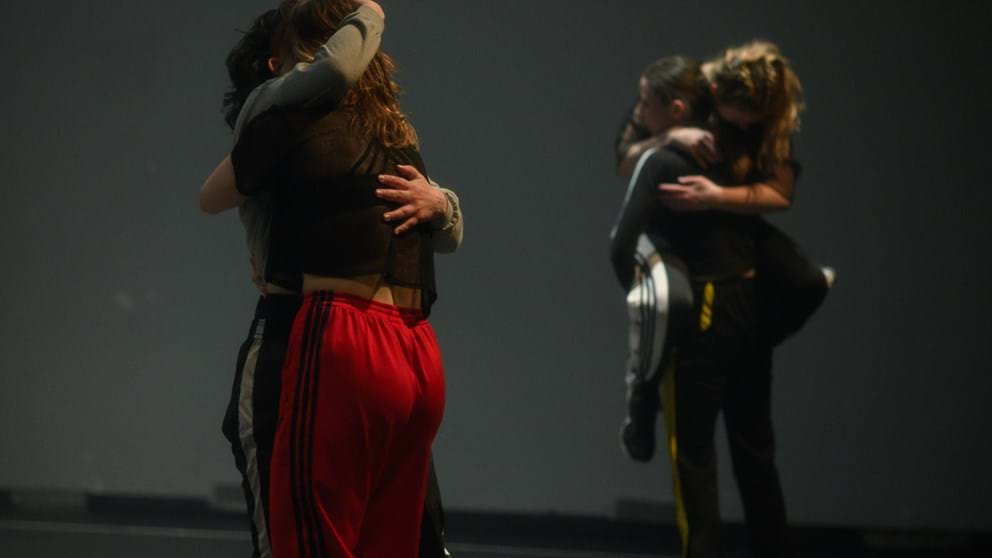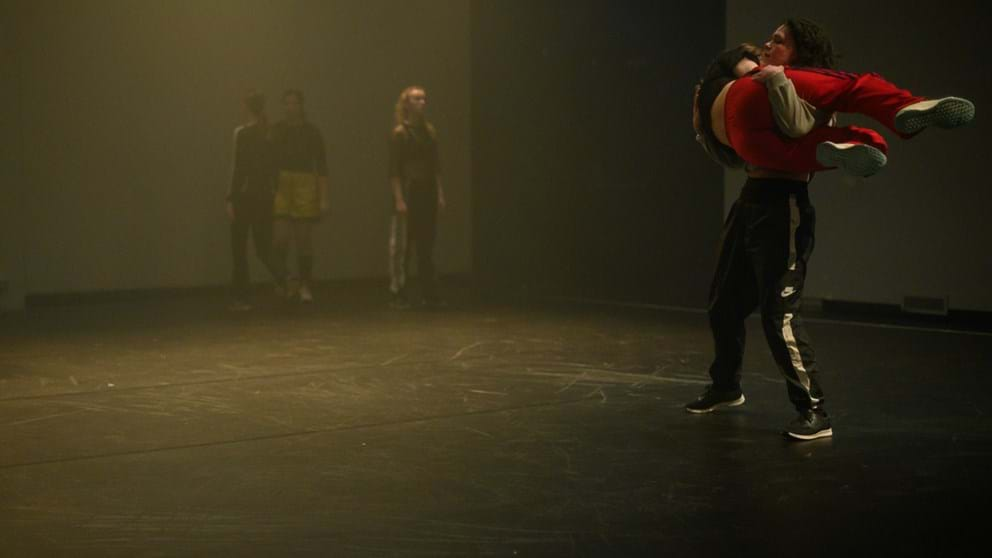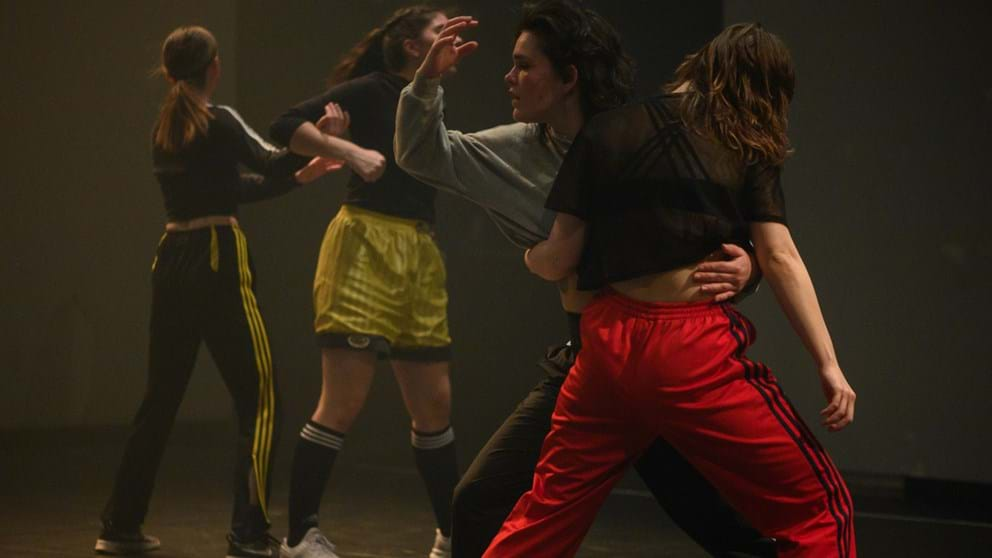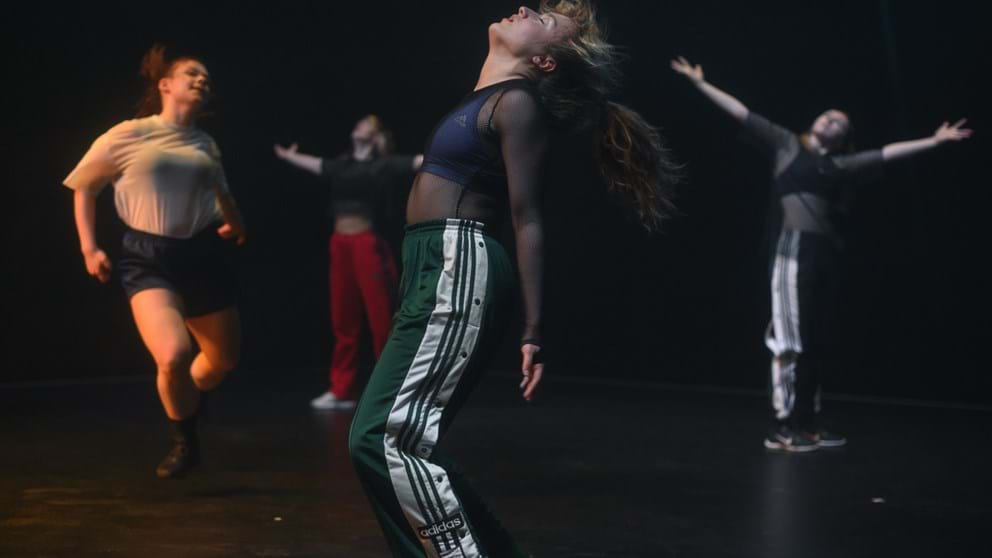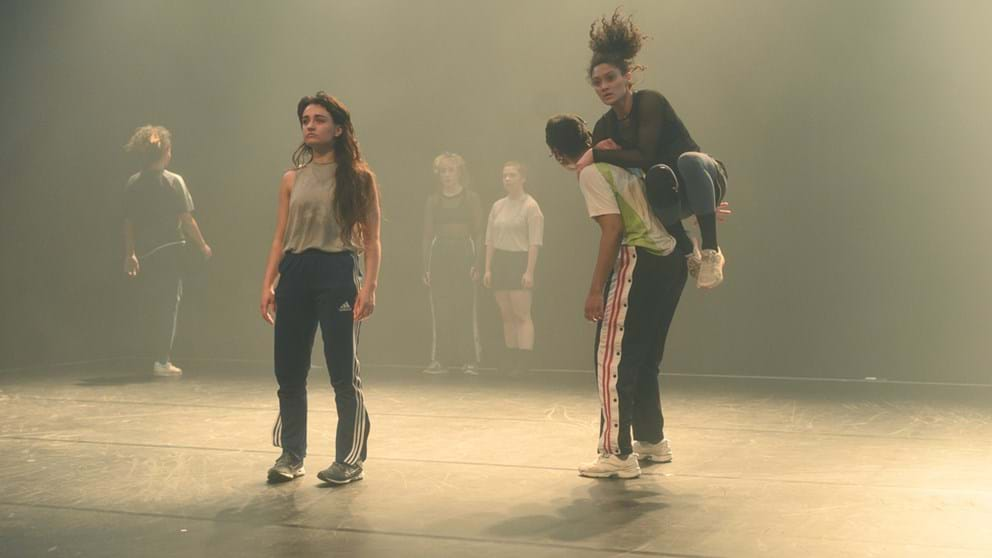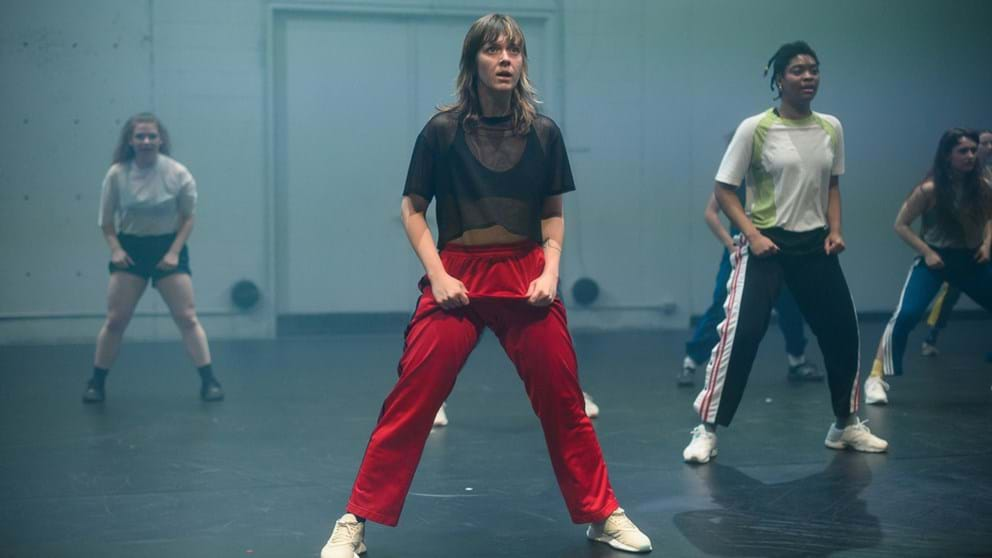Exclusive interview_ Andrea Peña tells us about creating PENTHAUS
25 juin 2022
« I want to pass onto them that they have a pouvoir and responsibility, that they can affect and contribute to a work with everything they have, who they are and what they have to say. »
In this exclusive interview, the Montreal-based multidisciplinary artist, Andrea Peña talks about her inspirations as a choreographer and the creative process behind PENTHAUS, her original creation for the Final Year Project of the Graduate Students 2022.
Andrea Peña, a Montreal-based multidisciplinary artist and choreographer, was one of the two guest artists to create a choreographic piece for the Final Year Project of the graduate students of 2022. The work was presented in front of two full houses in the month of May and is now available for online viewing within the framework of the two end-term showcases of the Professional Training Program in Contemporary Dance of the school.
In this exclusive interview, Andrea tells us about her inspiration for being a choreographer with much generosity and invites us behind the scenes of PENTHAUS, her original creation for our Graduate Students of 2022.
- Today, you are a choreographer who works, among others, with students who aspire to become professional dance artists. When you look back on your dance studies, what would you say made the biggest impression on you?
I come from a very classically-trained background and I worked with larger companies with a more formal approach. And what I think really triggered me in the work that I do now is the desire to make space for interpreters to be in dialogue with graphic work in a way that I didn't have the access to when I was a dancer. I trained in San Francisco at Alonzo King LINES Ballet. He is an African-American choreographer and he really inspired me because he sees choreography in a very philosophical, spiritual and human-centered way (human in the good way), which really resonated in my reflections. So, the number one question I had when I started choreographing was how to create a work that utilizes the intellect of the collaborators and their ways of being people and not just dancers.
-
When you teach future professional dance artists, what is the first thing you want to pass on to them?
You know, I am really interested in cultural hybridity and identity. So, as a choreographer, I want to make choreographic frameworks for the voice of the interpreter to be in the forefront of a choreographic work rather than the work itself. Working with next generation dancers, I want to offer them tools of how to be agents of a choreographic experience, that is, how to serve a work without serving a choreographer. I want to pass onto them that they have a pouvoir and responsibility, that they can affect and contribute to a work with everything they have, who they are and what they have to say in relation to the ideas proposed by a choreographer in order to meet the work halfway instead of only being there to serve ideas. So, with the students at L’EDQ, my goal was to get them to be empowered in what they think and how they appropriate an idea and twist it - and it worked amazingly. -
The title of your piece is PENTHAUS. Why did you choose this as a title?
I chose the word penthouse, but I changed it a bit. I like the word because I feel like it denotes a building, so it denotes weight, concrete, something of an infrastructure that is sedimented, has ground and is fixed. But at the same time, when I think about a penthouse, I also think about something that is very elevated, that is connected to the gods, that is on the last floor of this structure that is weighted and heavy. So, I find that in this title, there's an interesting juxtaposition of this very concrete, embodied, heavy object - a sense of weight created by all these women - that is also trying to reach elevation. This, for me, is a connection to collective and individual trance, the idea with which we were working.
I think that it's so relevant to see 13 women-identifying and non-binary bodies on stage in a sort of very vulnerable and empowered manifestation of their strength, their fragility and their support to each other and to themselves! I feel like when you watch the work, that is what you witness. And then you witness at the same time an evolution of how that collective support, the trust in the collective, allows other things to happen beyond the piece and beyond seeing a choreography.
- UMi, as in the constellation Ursa Minor, is a title of the Final Year Project of the our Graduate Students of 2022, emphasizing the strength in collectivity while appreciating the individual qualities of each person. Would you say that this idea of being united in collectivity is represented in PENTHAUS in any way?
Absolutely! In a work like this, obviously, the notion of the collective is extremely strong. But the idea of a dialogue between the individual and the collective was also present in my first piece and my first grant application ever. Where does the individual find its place inside of the collective that is constantly driving and is aware of the whole? In design theory, there are a lot of authors who challenge the idea of a universe because it's only one universe and there are theories around the idea of a pluriverse, which means multiple universes coexisting at the same time. So, I think that in this question of individual and collective, the idea is not that the collective becomes one. It's rather that each individual is one universe coexisting with each other.
-
During the creative process, our students had the chance to also work with two of your associate dance artists, Erin O'Loughlin and Jean-Benoît Labrecque from Andrea Peña & Artists, the Contemporary Performing Arts Company that bears your name. Why did you choose them for this project and what was their role during the creation?
We had three weeks to create this work. There are different layers inside of the way we work. So, the first week, Erin O'Loughlin came in and taught the base material because she's very structural, very organized and she knows the material really well. She's all about the form of the body because in our work, we're trying to work on the texture, the form and the language of the body. So, she was able to bring this very structural body and textural language to the work. But then, we needed to shift our focus to what the dramaturgy of the interpreter was. So, the second week, we had one of our dancers, Jean-Benoît Labrecque, work with the students, who has a more dramaturgical eye. He was able to bring the sort of disruptive and playful posture : How does the interpreter make a choice? How do they play? What do they activate? How do they disrupt? So the students had been offered two different approaches before I came in and finished all of the structures.
It was a beautiful creative process because the students had the opportunity to work with three perspectives at the same time, including the perspective of a dancer in a work - which is theirs - and then that of the choreographer’s.
- According to the manifesto of the company, at AP&A you believe in destabilizing yourselves, each other, your own ways of thinking, the norm, categories, as you move towards challenge by means of integrity. Is this idea of destabilization represented in PENTHAUS in any way, on an individual or collective level?
I think in this particular piece, it is not that the choreography creates situations that are destabilizing. You don't look and say, “That is a moment of destabilization.” But I think what I was trying to do is to generate feelings that destabilize the viewer. With PENTHAUS, there's a very athletic, brutal, surrendered notion, like the ending when they're all running forward and it is almost like there is an urgency in what they have to say. Also, there is a necessity of surrender, of support, of pain, of having another person in the way the bodies collide into each other. So, I think there is a combination of that feeling of need, pain, sorrow and bodies, but with insistence, because you have people who are still insisting on running. I think my intention is that by putting all those things in a complex way, hopefully at the same time, a sentiment or a feeling is created in the viewer that becomes destabilizing, which then changes that person. - PENTHAUS is an emotionally and physically demanding piece. It has a sort of out-of-this-world energy that resonates with both the dancers and spectators, long after the show is over. How could you prepare the students mentally for such a performance?
I think what is important for me with work that is demanding is that my intention for the dancers is not to tap into emotional places like pain within themselves because that is too fragile. So, we try to find other avenues that can create a sentiment of struggle, let's say. These pieces are created to be very task-based so that the dancers do not have to think about creating struggle or insistence. Their task is just to insist. They have the freedom to get lost in a task and it is that freedom of getting lost in a task that then makes space for surrender, which then makes space for vulnerability, which then makes space for other emotions. So, what we witness as spectators is very different from what the dancers are working on.
Also, in this particular work there is something about picking up energy from people around you. On stage, there is an ecosystem in which the dancers are constantly feeding off of each other because the piece is very physically demanding. There is a section that I call “Ride or Die”, as in “My best friend, she's my ride or die, so she will always be by my side.” So, the dancers choose who their “ride or die” is, meaning that everything they do with their emotion and energy on stage is there to support that chosen person. They create links and then support and feed off of each other energetically. It is with little tools like this that are not choreographic that we find ways to support the dancers in the task or in sustaining an idea.
- Why do you think the public should see PENTHAUS during the webcast of the Final Year Show 2022? What should they expect before watching the show?
I think that it is so relevant to see 13 women-identifying and non-binary bodies on stage in a sort of very vulnerable and empowered manifestation of their strength, their fragility and their support to each other and to themselves! I feel like when you watch the work, that is what you witness. And then you witness at the same time an evolution of how that collective support, the trust in the collective, allows other things to happen beyond the piece and beyond seeing a choreography. I think the interpreters trust each other so much that it allows them to go to new places with the work by the end of it. For example, the place that we get to at the end. Choreographically, it was constructed, of course. But at the same time, it is a vortex that happens because of the trust that is built in these 13 empowered bodies whose goal is to unshed themselves through the work. - If you had to give one piece of advice to future professional dancers, what would it be?
I think it's really important that they take the time to develop, not their own relationship to being a dancer, but their own relationship to their practice, their practice of being in their body. Their practice of interpreting. Because I think that you can dance for choreographers, but for young dancers to take the time and to nurture that time to own movement as a practice that belongs to them which then is in dialogue with the choreographer is very important. - What are your upcoming projects as a performer and choreographer?
We have a mix of projects. We are turning our latest work, 6.58: MANIFESTO into a VR (virtual reality) film that we are shooting in a week. I also have a design and visual arts practice and I am developing an exhibition that is going to be shown in a museum in Pittsburgh. It will be a very material, sculptural, but also digital exhibition with some performative activations that are going to be in a museum. We also have other dance-related projects, but a big part of my universe is working on VR, which is a digital medium, or on a visual arts exhibition, and these things feed my works or the way I think of body and space.
-
L'École de danse de Québec tient à remercier Andrea Peña pour le partage de ces pensées avec le public avec tant de générosité!
L’EDQ reçoit chaque année plusieurs artistes, chorégraphes et professeurs invités afin d’initier les étudiants-danseurs à divers processus créatifs.
//
L’École de danse de Québec wishes to thank Andrea Peña for sharing her thoughts with the public with such generosity!
Each year, L'EDQ welcomes several dance artists, choreographers et guest teachers to initiate the contemporary dance students to diverse creative processes.
***
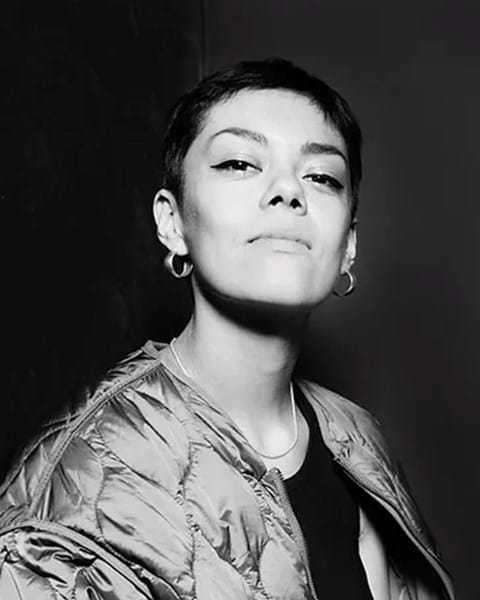
Originally from Colombia, Andrea Peña is a multidisciplinary artist whose creative practice transverses the fields of art installation, choreography and design. Her works are focused on the creation of critical, alternative, performative and spatial universes that question the individual within society. Peña’s choreographic language is characterized by its vulnerability, complexity and rich physicality, which extends beyond mere movement, through a conceptual research approach.
Post a professional career as a dancer with BalletBC and Les Ballets Jazz de Montreal, Peña founded Andrea Peña & Artists in 2014. The company has been recognized with numerous awards and commissions, for their conceptual, visceral and highly rigorous creations, recently including the 2018 Hong Kong International Choreography award and the 2018 Banff Arts Center's Clifford E. Lee Canadian Choreography Award.
Source : https://nac-cna.ca/en/bio/andrea-pena
Photo : Bobby Leon
visionnez/Watch PENTHAUS
PENTHAUS est disponible en ligne jusqu’au 26 juin 2022 à 23h59, dans le cadre d'UMi, le Spectacle des Finissant.e.s 2022 et du Spectacle de fin de saison 2022 des étudiant.e.s à la Formation supérieure en danse contemporaine de L’École de danse de Québec.
PROCUREZ-VOUS VOTRE BILLET DÈS MAINTENANT!
Finissant.e.s 2022 : Élisabeth Arsenault, Laurence Bécotte, Minerva Bonnabel, Noémie Chenard-Joe, Florence Côté, Maïna Darracq, Leticia Porto Gonçalves, Emmy Grégoire, Deya Lemière, Romane Picard, Léa Richard-Cormier, Sarah-Jane Savard, Jo Trozzo-Mounet
*Le programme Danse-interprétation de L'École de danse de Québec est offert en partenariat avec le Cégep de Sainte-Foy.

